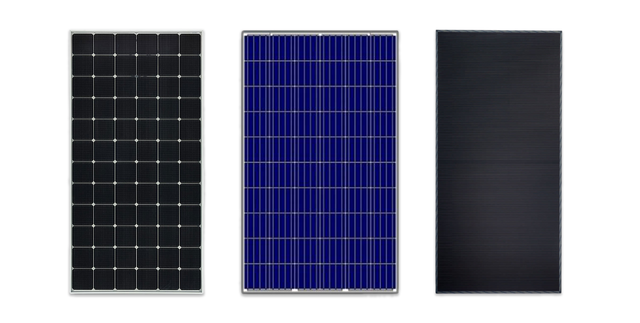The Best Strategy To Use For Solar Systems
Table of ContentsSolar Systems for DummiesThe Buzz on Solar SystemsThe Greatest Guide To Solar SystemsThe Buzz on Solar Systems
There are 3 various kinds of solar panels: monocrystalline, polycrystalline, and also slim movie. Monocrystalline photovoltaic panels are very effective and also have a streamlined layout, yet come with a higher price point than other solar panels. Polycrystalline solar panels are less expensive than monocrystalline panels, however, they are less efficient and aren't as visually pleasing.Nowadays, there are a number of ranges of monocrystalline solar panels on the market to select from., are ending up being a progressively prominent monocrystalline choice.
Due to the fact that monocrystalline solar batteries are made of a single crystal of silicon, electrons have the ability to quickly move throughout the cell, boosting overall performance. Not just do monocrystalline panels have the greatest effectiveness rankings, they commonly likewise have the highest power capability scores. A lot of monocrystalline panels on the market today will certainly have a power output ranking of at least 320 watts, yet can increase to around 375 watts or greater!.
Because polycrystalline cells have numerous silicon cells, the electrons can stagnate as easily and also because of this, reduce the efficiency of the panel. The reduced efficiency of polycrystalline panels likewise means they often tend to have a lower power output than monocrystalline panels, normally varying between 240 watts as well as 300 watts.
Some Known Details About Solar Systems
4% efficiency With slim film cell prototypes. In order to fulfill your power needs, you would need to install more slim movie panels over a big location to produce the exact same amount of power as crystalline silicon solar panels. This is why thin movie solar panels don't actually make good sense for household installations where space is limited.
The temperature coefficient informs you exactly how a lot the power output will decrease by for every 1 * C over 25 * C the panel gets. The standard temperature level coefficient for mono as well as polycrystalline panels usually falls somewhere in between -0. 3% and also -0. 5% per * C. Thin movie panels on the other hand, are around -0.
With some slim movie panels, it's tough to even see the individual cells within the panel. They additionally often tend to have less wiring and also busbars, indicating there's much less white room. Nevertheless, because they are so ineffective, you would need to cover your entire roofing system in thin movie panels - which may or might not be your style.

Some suppliers have functioned around this with black packaging or forming the cells in a different way, but these aesthetic changes can influence both the rate as well as efficiency of the panels. Overall, monocrystalline panels still look streamlined, however they're a bit more obvious than thin movie panels. solar systems. The procedure in which polycrystalline solar batteries are manufactured causes the cells to have a blue, marbled appearance.
The Best Guide To Solar Systems
If you're on a limited budget plan, polycrystalline panels could make even more sense for you. We do not advise thin film solar panels for domestic installations - their efficiency as well as resilience don't make the affordable worth it, and also it's unlikely you'll have virtually enough space to set up the variety of thin movie panels you would certainly need to cover your household electrical energy usage.
Considering that they are made from pure silicon, they can be conveniently recognized by their dark black shade. Making use of pure silicon also makes monocrystalline panels one of the most space-efficient as well as longest-lasting among all 3 photovoltaic panel types. Nonetheless, this comes at a cost a great deal of silicon is thrown away to produce one monocrystalline cell, often reaching over 50%.
/types-of-solar-panels-pros-and-cons-5181546_finalcopy-93f1db65349840bdba2822f75fa592f9.jpg)
Amorphous silicon panels (A-Si) acquire their name from their shapeless nature. Unlike mono-and polycrystalline solar batteries, the silicon is not structured on the molecular level. Typically, an a-Si cell requires only a fraction of the silicon required to create regular silicon cells. This allows them to have the most affordable manufacturing cost, at the cost of efficiency.
Little Known Facts About Solar Systems.
$0. 32-$0. 65 $1 $1. 50 $0. 70 $1 $0. 60 $0. 70 $0. 50 $0. 60 $0. 43 $0. 50 Note that these numbers do not consist of the expense of see this here installment and labor. With labor and other overhead factors, the total can increase to $2. 50 to $3. 50 per watt.

This suggests that thin-film panels can be a great choice for hotter settings or areas that experience more sunshine throughout the web year. The upgraded International Structure Code of 2012 requires solar panels to match the fire score of the roof where they are mounted. This is to ensure that the modules do not accelerate the spread of flames in the event of a fire.